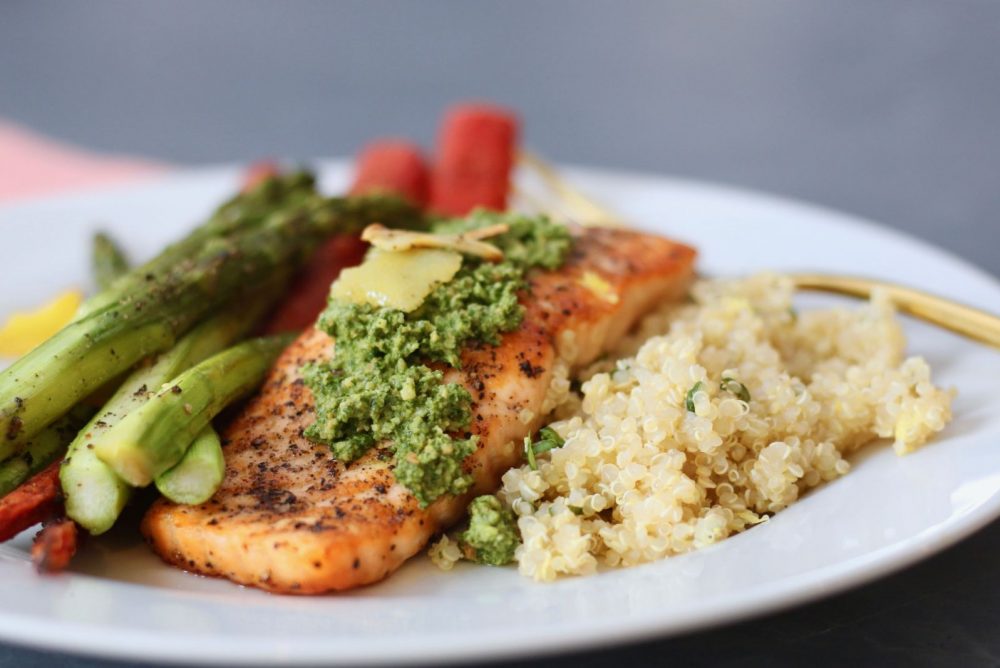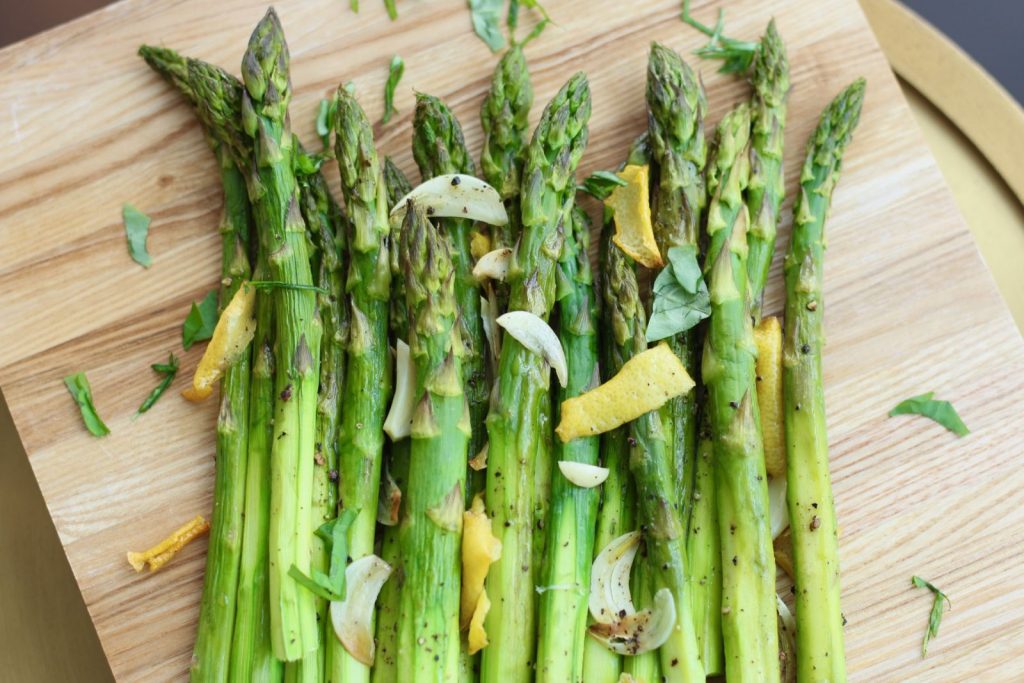
This week WeCollab visited The Gathering Place, in Clarks Summit, PA to educate and promote healthful eating patterns for community members living with diabetes. Our goal was to create a dinner menu featuring a variety of nutrient dense foods with special consideration given to the American Diabetes Association “Create your plate” interactive model. Create your plate is a simple, effective eating plan that helps individuals manage weight and blood glucose. A balanced meal contains 50% non-starchy vegetables, 25% healthy protein and 25% whole grains.
Since it’s May, we wanted to highlight fresh, seasonal produce. Asparagus is an excellent source of fiber, folate, and vitamins A, C, E, and K. Asparagus is high in chromium, a trace mineral that enhances the ability of insulin to transport glucose from the bloodstream into cells.

Salmon is a wonderful source of protein rich in omega-3 fatty acids. The American Diabetes Association suggests adding two servings of fish per week for a healthy, balanced diet. Consumption of EPA & DHA, found in fatty fish, is recommended for individuals with diabetes. Essential fatty acids have beneficial effects on lipoproteins and help with the prevention of heart disease.
The quality and amount of carbohydrates consumed is extremely important in diabetic meal planning. Ideally carbohydrate sources should be rich in dietary fiber, vitamins, and minerals and low in added sugars, fats, and sodium. Quinoa has more protein than any other grain. It is gluten-free, contains 3 grams fiber per serving, and is a healthy alternative to any recipe that uses rice or small pasta.
Before prepping the pesto and salmon, prepare the quinoa and asparagus.
The trick to cooking Quinoa is to use low sodium vegetable broth to fortify the flavor and bring out the nuttiness in the grain. Quinoa cooks in a 2:1 ratio. Bring 2 cups of vegetable stock and 1 cup of rinsed quinoa to boil and let the grain simmer for 20 minutes until the broth is fully absorbed. When the quinoa is finished, remove from the heat and lightly fluff with a fork. Add additional basil and lemon zest and set aside.
To prepare the asparagus, snap the ends off of the bottom third and peel the outer tough skin. Place the asparagus on a baking sheet and brush the stems with extra virgin olive oil, lemon zest, and 1 sliced garlic clove. Add salt and pepper to taste. Roast for 15 minutes, until bright green.